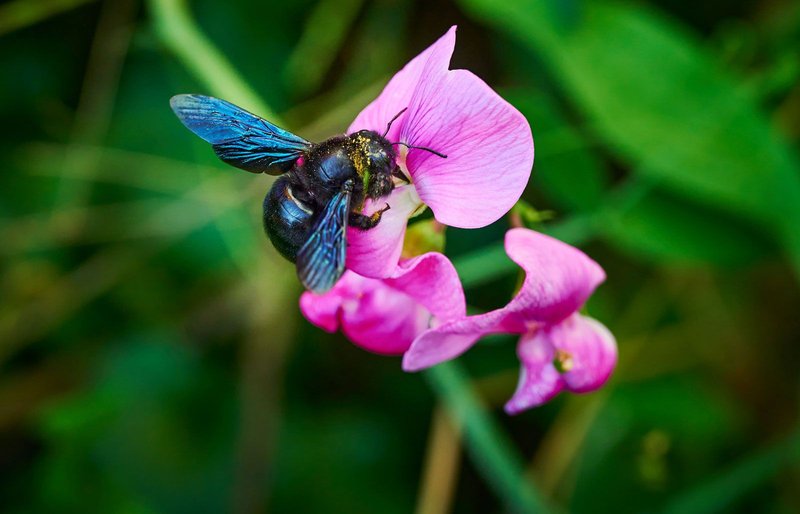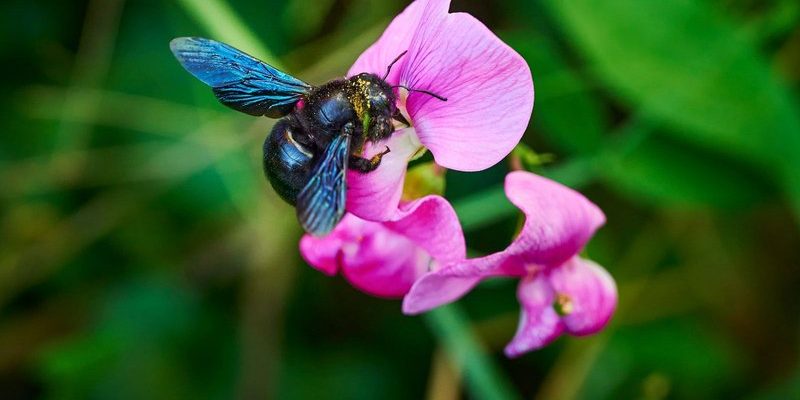
Imagine a group of friends in a coffee shop, animatedly chatting and sharing stories. This analogy reflects how carpenter bees communicate. They have their own language made up of sounds, behaviors, and even scents. Understanding how they interact can give us insights into their lives and their roles in our ecosystem. So, let’s dive into the social world of carpenter bees and explore how they convey messages through their intriguing behaviors!
The Basics of Carpenter Bee Communication
Carpenter bees, like most insects, rely heavily on communication to survive and thrive. Vibrational signals play a crucial role in how they interact. These bees produce a variety of sounds by rapidly beating their wings or vibrating their abdomens. You might think of it like a musician playing different notes on a guitar. Each vibration can mean something different: it could be a warning, an invitation to mate, or a signal to alert others of a nearby threat.
In addition to sounds, carpenter bees also communicate through scents. They produce pheromones, which are chemical signals that can convey complex messages to others. For example, a female carpenter bee might release pheromones to attract males during mating season. If you were to stroll past a flowering garden during this time, you might notice these bees buzzing around, seemingly communicating with each other in a flurry of activity.
Visual Signals and Body Language
Like many creatures, carpenter bees also rely on body language. When they’re interacting, you might see them engaging in specific movements or postures. For instance, a male carpenter bee might perform a kind of dance, fluttering his wings and hovering near a female to catch her attention. It’s like they’re putting on a little show, hoping to impress.
You might think about how humans use body language to express feelings or intentions. Carpenter bees do this too. If they feel threatened, they can display aggressive behavior, such as flying in circles or buzzing loudly. This is their way of saying, “Back off!” It’s fascinating how much can be communicated without a single word being spoken.
Creating a Nest: A Social Undertaking
When carpenter bees build their nests, it’s not just a solitary activity; it’s a community effort. These bees often return to the same site year after year, reinforcing their social bonds. They create tunnels in wood, and these nests can house multiple generations of bees.
During the nesting season, you might see male and female carpenter bees working together. The males often patrol the area around the nest, defending it from potential threats while the females work on expanding the tunnel. It’s a bit like a team project in school—everyone has their role, and together they create something beautiful (or in this case, functional).
Understanding Their Environment Through Interaction
Carpenter bees are also great at navigating their environment thanks to their ability to communicate. When they find a good source of nectar, they can share this information with others. They might return to the nest and perform a kind of “dance” to indicate where they found food. It’s their way of saying, “Hey, there’s a buffet over here!”
This interaction is crucial for their survival. By sharing information, they ensure that more bees can benefit from the same food source. It’s a collective effort that highlights the importance of teamwork in nature.
Challenges in Communication: Noise and Disturbance
Interestingly, carpenter bees face challenges in their communication, just like we do. Urbanization, noise pollution, and habitat destruction can disrupt their signals. If you think about it, it’s hard to carry on a conversation in a noisy café. Similarly, carpenter bees may struggle to communicate effectively in environments filled with distractions.
This disruption can lead to misunderstandings within their community. For example, if a bee can’t hear the warning signals from another about a predator, it could be at risk. It’s crucial for us to be aware of these challenges because preserving their habitats can help support these unique forms of communication.
The Importance of Carpenter Bees in Ecosystems
Carpenter bees play an essential role in our ecosystems. Their communication is not just for their benefit but also for the plants they pollinate. As they communicate about food sources, they inadvertently help to ensure the survival of various plants. This relationship is a great example of how interconnected life is on our planet.
By understanding how carpenter bees communicate, we can appreciate the complexity of their social life. Their ability to convey messages through sounds, scents, and body language highlights the intricate dance of life and survival. Plus, they remind us of how vital each creature is to our environment.
Final Thoughts on Carpenter Bee Communication
So, next time you see a carpenter bee buzzing around your garden, take a moment to appreciate the rich tapestry of communication that is unfolding. These bees are not just mindlessly flying from flower to flower; they are engaging in a complex social structure that involves sounds, scents, and movements.
By observing and learning about these interactions, we can better understand not only carpenter bees but also the delicate balance of our ecosystems. Preserving their habitats and being mindful of their challenges will ensure these fascinating creatures continue to thrive. Let’s celebrate their unique world and the vital roles they play in nature!

